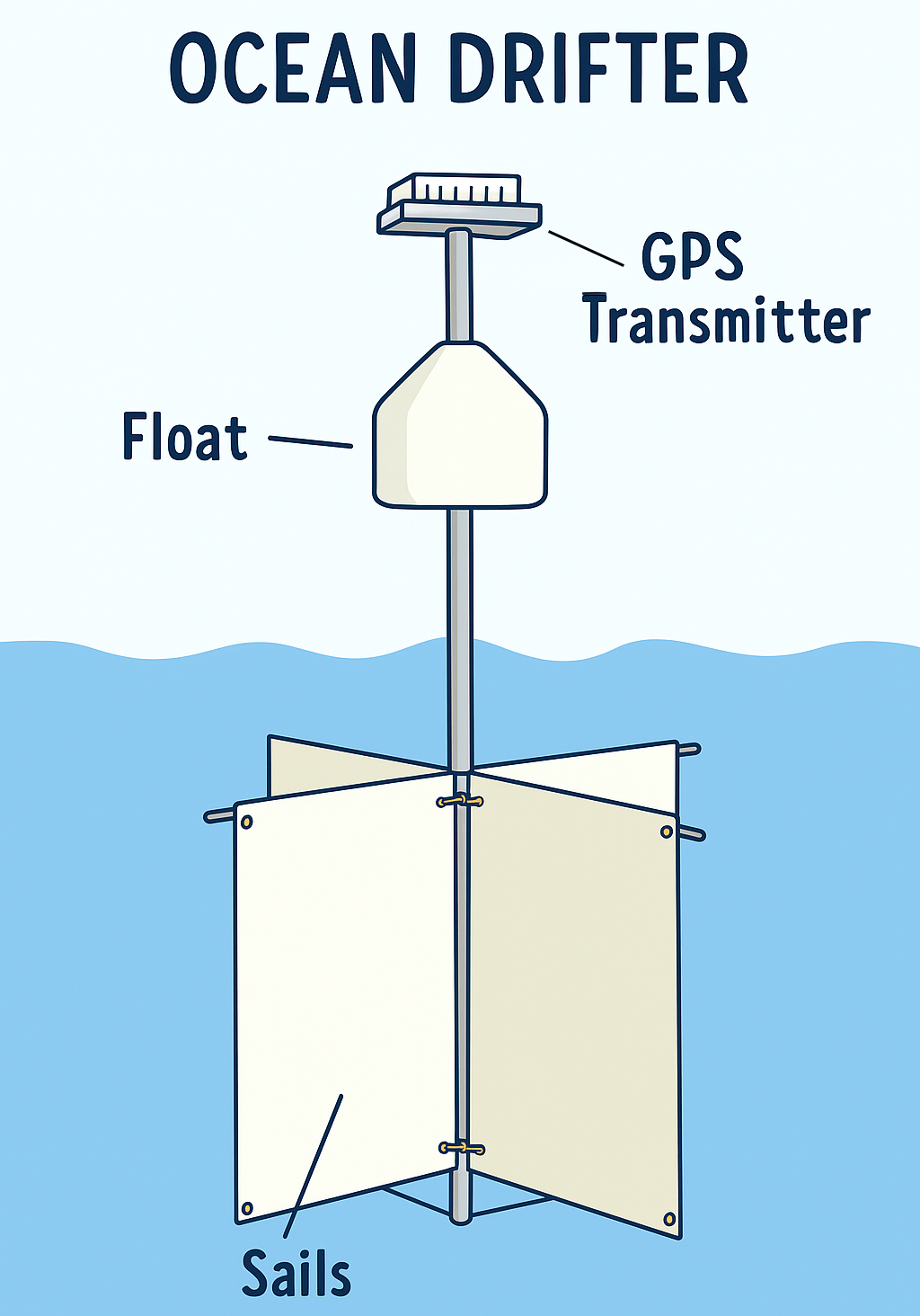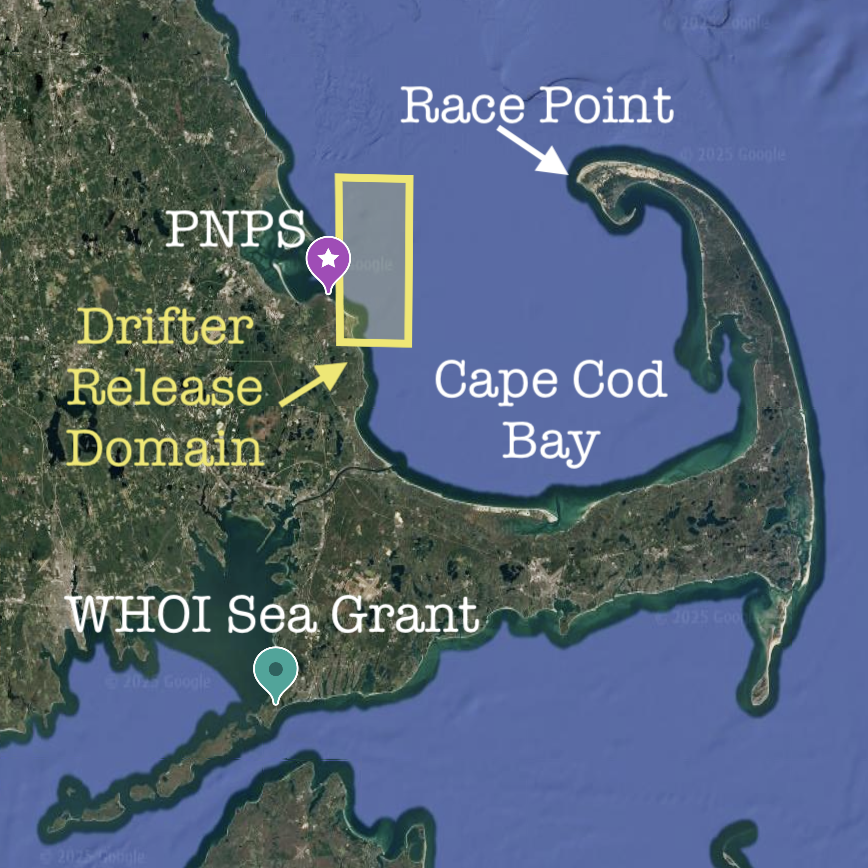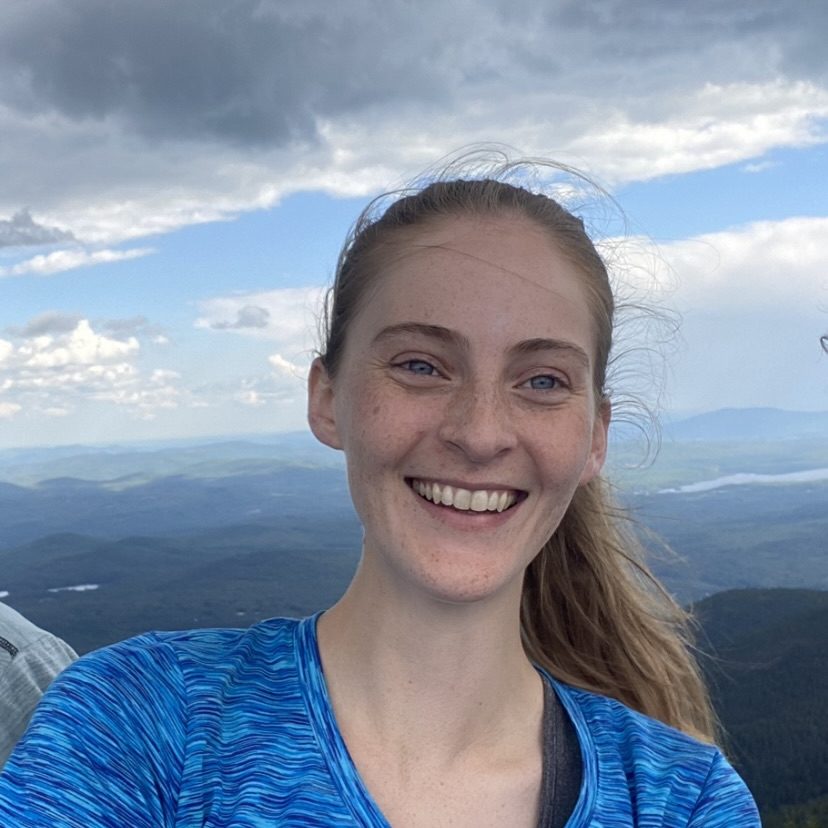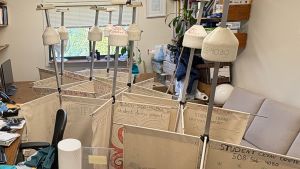O-STEAM-Powered Drifters

We're tracking currents in Cape Cod Bay over the next year using drifters! Starting this fall, we will release drifters once each season to collect real-world observations of the Cape Cod Bay circulation. How does the circulation pattern change during different seasons? How long will the instruments drift before eventually coming ashore? What path will they take? What can we learn about the ocean as a result?
The drifters were built in August 2025 in collaboration with 10 high school-age young women from across Massachusetts as part of WHOI Sea Grant's O-STEAM fellowship, held each summer in Woods Hole.
What’s a drifter?
Drifters are devices that are set out into the ocean to follow the currents and help scientists understand the movement of water. Drifters are made up of a frame with four “sails” that go into the water. The sails are what enable the drifters to follow subsurface ocean currents—think of turning a sailboat upside down so that it's moved by the water instead of the winds! A float at the top of the frame keeps the drifter buoyant and a GPS transmitter above the float sends position data to a satellite and then my computer.


Where is our study area?
Our study area is in Cape Cod Bay. The yellow rectangle on the map is where we plan to release the drifters beginning this fall – one deployment per season through summer 2026. The drifters’s on-board GPS will allow us to trace their movements in and around Cape Cod Bay. With that knowledge, we will, in turn, be better able to predict the pathways of various possible environmental hazards or pollutants like red tide, microplastics, and a recent proposed release of wastewater from Pilgrim Nuclear Power Station (PNPS).
Follow along as we map the drifters’ paths in and around Cape Cod Bay and report back on where they make landfall. We’ll also share the stories of those who recover them.
Sign up here to get an alert about our next blog post!
Background
The information gathered by the drifters is part of my graduate studies to better understand circulation patterns in Cape Cod Bay. The lab I work in at WHOI is led by Irina Rypina. Two years ago, our lab team used ocean models to predict the probable spreading pathways of a potential release of wastewater from PNPS. You can read more about that study here or read our published paper here. From that study, we found the circulation patterns in Cape Cod Bay vary by season: more water was able to leave Cape Cod Bay during spring and summer as compared to winter and fall, when it was essentially “trapped” within the Bay for long periods of time.
After observing this trend in the model-based results, we wanted to use actual ocean observations to support our findings – which brings us to why we are launching the drifters made by the O-STEAM fellows. We plan to release drifters each season to investigate if the seasonal differences we found using the model are reflected in ocean observations collected by the drifters and sent to the lab by the drifters’s GPS transmitters.
About our blogger

Margaret Gregory is a fifth year PhD candidate in the MIT-WHOI Joint Program. She studies the formation of waves over the continental slope (where the shallow continental shelf extends to the deep ocean floor) as well as transport within Cape Cod Bay.
Latest Stories
We’ve had an exciting few weeks tracking our drifters! As of November 12 two drifters – yellow “Sofia” and teal “Sophia” – have reached shore!…
Read MoreWe released our first set of four drifters into Cape Cod Bay on Friday (10/24/2025)! We had planned to deploy them a few days earlier,…
Read MoreAs a part of this summer’s O-STEAM program, I was able to spend a day with the fellows talking about how drifters can be used…
Read More



